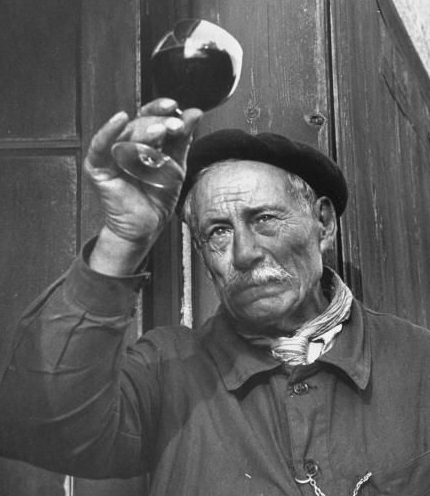
photo: Thomas D. McAvoy/Time & Life Pictures/Getty Images 1952
Wine tastings can be an incredible but also potentially intimidating experience. If you have never attended one and are curious about what is entailed, Terry Rogers of Horseneck Wines, our resident wine expert, is here to offer some guidelines on what to expect.
The wine tasting experience starts with your senses.
1) Sight – You are served a glass of Chardonnay from California and from experience you know that white wine should be a light to a medium pale yellow. After examining the color, hopefully the wine in your glass looks the way you remember a wine you have enjoyed before. So your sense of sight has done its job – and if you don’t like what you see, chances are you are going to be careful as you move on the next step. If you are taking notes, color and shade should be recorded, as well as clarity. As a more advanced student, you will learn more specifically what to observe.
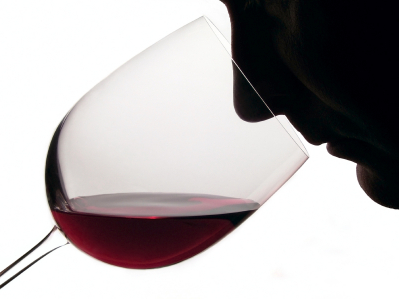 2) Smell – Sight has approved the choice so now you put the glass up to your nose for the aroma. The sense of smell is not only for assessing the wine but will enhance the flavor when we proceed to that step. Since smell is the sense most connected to memory, you will learn how an aroma can help to recall a scent you have stored in your olfactory memory. Subconsciously you have come to learn that a California Chardonnay will have an apple nose with some vanilla hints if the wine has spent any time in oak barrels. The marriage of the chardonnay grape and the oak produce that vanilla buttery quality that you pick up through its scent. Analyzing the aroma can be overwhelming at first but as you become more aware of these associations, it will become easier to identify the connections. Eventually, there are three levels of wine aromas that can be discussed and as you progress in your wine tasting skills will learn how to discern. If your nose has picked up any mustiness or corkiness at this point, chances are you will be a bit hesitant to take the next step
2) Smell – Sight has approved the choice so now you put the glass up to your nose for the aroma. The sense of smell is not only for assessing the wine but will enhance the flavor when we proceed to that step. Since smell is the sense most connected to memory, you will learn how an aroma can help to recall a scent you have stored in your olfactory memory. Subconsciously you have come to learn that a California Chardonnay will have an apple nose with some vanilla hints if the wine has spent any time in oak barrels. The marriage of the chardonnay grape and the oak produce that vanilla buttery quality that you pick up through its scent. Analyzing the aroma can be overwhelming at first but as you become more aware of these associations, it will become easier to identify the connections. Eventually, there are three levels of wine aromas that can be discussed and as you progress in your wine tasting skills will learn how to discern. If your nose has picked up any mustiness or corkiness at this point, chances are you will be a bit hesitant to take the next step
 Photo: Paul Almasy/Getty Images 1953
Photo: Paul Almasy/Getty Images 1953
3) Taste – The smell or what is better known as the bouquet has now told you that it is ok to move into the mouth. When tasting wine, you always bring a little air in with the first sip (it is basically a slurping noise). Not very romantic to listen to a room full of people tasting by bringing air into the mouth with the wine; but that is wine tasting. All of the taste buds that are in your mouth are now heightened. This is very important because this sense will keep all of this wine information in a reference part of your brain for future experiences. Your mouth has senses on the tongue, sides and upper areas where the wine needs to reach. Therefore, do not just take a sip and swallow. You need to swirl the wine around in your mouth to cover all the areas to pick up the varietal flavor, acidity, vanilla, and whatever other characteristics the wine has to offer. Sweetness and sourness are always detected most rapidly when tasting due to the sensitivity on the tongue and since those flavors naturally occur in foods, we are used to picking them out. It is a journey to develop a full range of flavors. If someone has ever asked if you can taste the chocolate, tar, or earthiness in a wine, you may not be able to pick those sensations out right away but with training and more tastings with people who have a trained palate, you will get there.
Let us now take our new tasting knowledge and apply it to a specific region. Today we will talk about Graves appellation.
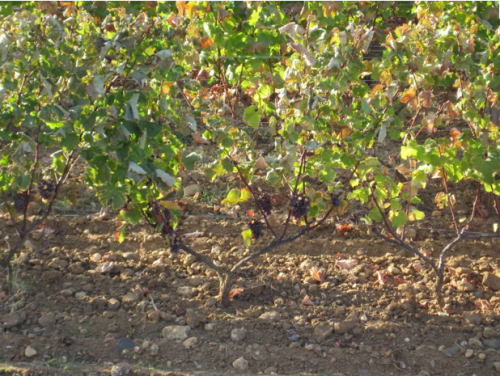 The Graves region, although it is perhaps stating the obvious, is named for the gravelly terroir which lies underfoot; the depth of gravel varies, and is as deep as three meters in places. This well drained and impoverished soil (in France it is illegal to irrigate so the wine regions have to rely on mother nature to have their grapes watered by the rain) is credited with much of the character and quality of the wines of Graves, although why this particular area of Bordeaux should be so blessed with this name, rather than any of the communes of the Médoc further north which are also characterized by gravel on which so many of the famous Grand Cru Classé properties are sited, is something of a mystery. The vineyards are also dotted with clay, chalk, sea shells and sand, the latter elements testament to the nearby waterways.
The Graves region, although it is perhaps stating the obvious, is named for the gravelly terroir which lies underfoot; the depth of gravel varies, and is as deep as three meters in places. This well drained and impoverished soil (in France it is illegal to irrigate so the wine regions have to rely on mother nature to have their grapes watered by the rain) is credited with much of the character and quality of the wines of Graves, although why this particular area of Bordeaux should be so blessed with this name, rather than any of the communes of the Médoc further north which are also characterized by gravel on which so many of the famous Grand Cru Classé properties are sited, is something of a mystery. The vineyards are also dotted with clay, chalk, sea shells and sand, the latter elements testament to the nearby waterways.
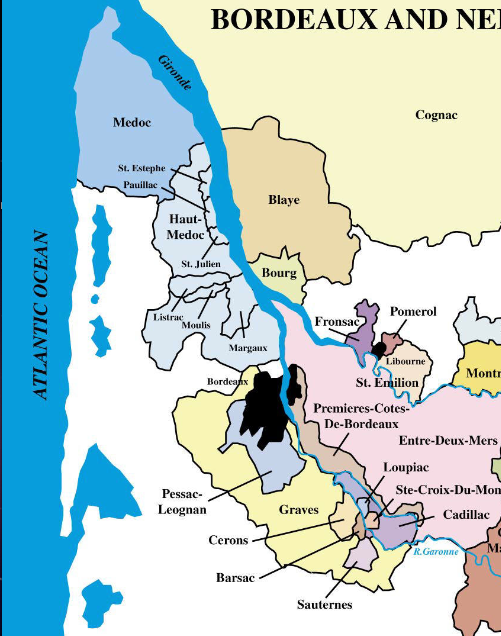 To the west of the river Gironde, the vineyards of the Médoc and Graves are based on gravelly soil and are planted mainly with Cabernet Sauvignon vines. To the east lie Pomerol and St-Emilion, two smaller areas of predominantly clay soil, planted with a higher proportion of Merlot. Hence we have “left bank” and “right bank” wines.
To the west of the river Gironde, the vineyards of the Médoc and Graves are based on gravelly soil and are planted mainly with Cabernet Sauvignon vines. To the east lie Pomerol and St-Emilion, two smaller areas of predominantly clay soil, planted with a higher proportion of Merlot. Hence we have “left bank” and “right bank” wines.
The wines from each area can have quite a different character because of the different soils and predominant grape variety. This also means that one is usually more successful than the other in any given year.
Therefore when we are about to taste through wines from the Graves region in Bordeaux, we should remember what the terroir above is telling us. The blend of what goes into Graves is Cabernet Sauvignon, Cabernet Franc, Petit Verdot and Merlot and the tannins that are in the grape skins allow these wines to live for many, many years.
Thinking about the best glass to use – Reidel has a Vinum Bordeaux Glass that is approximately 16oz. You want to have a large surface area to take in the wine and air at the same time. With a younger Bordeaux such as a 2006 or 2005 my feeling is that one should definitely use a decanter or do what I call double decanting (pour wine from bottle into decanter and than back into the bottle).
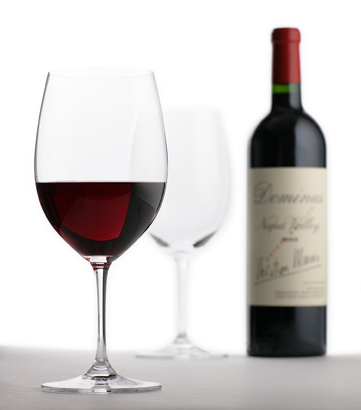
For an older Bordeaux you must be very careful not to upset the wine by allowing too much air to seize the moment! Wine that has been in a bottle for many, many years is like a genie in a bottle; you must let the air in and allow the wine to gently breathe or you will lose the special moment.
Some lovely wines from the Graves region that are worth looking for: Lafite Reserve Rouge and Blanc ($14.), Ch. Haut Bertinere Rouge and Blanc ($16.)
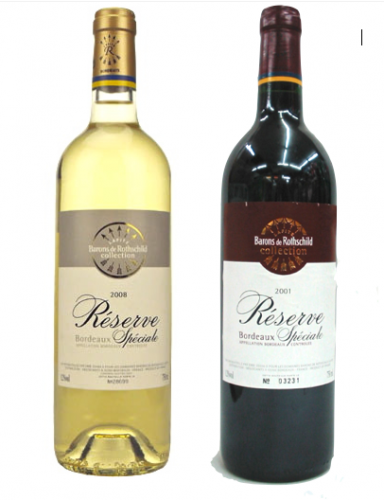
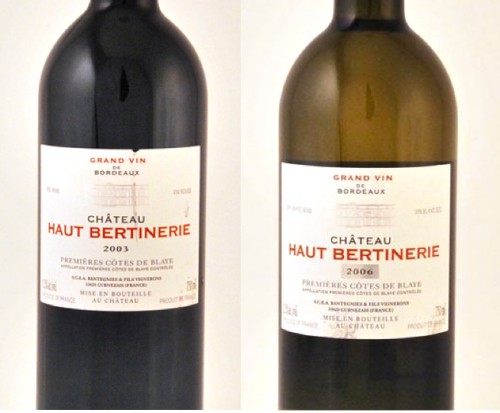
The Bordeaux Blancs are wonder wines. If you are a sauvignon blanc fan, come try them out. The blend for the blanc is Semillion, Sauvignon Blanc. Once and a while the blend will end up with a little bit of the Muscat grape.
Thanks Terry! So next time you are trying a new wine, take a moment think about Terry’s tips – it will help develop your skills of differentiation so that when you do attend your next (or first) official wine tasting, you’ll know what to look for and will be a bit better prepared. Cheers!

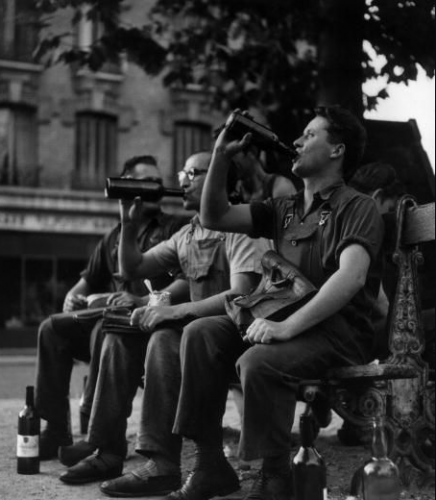 Photo: Paul Almasy/Getty Images 1953
Photo: Paul Almasy/Getty Images 1953

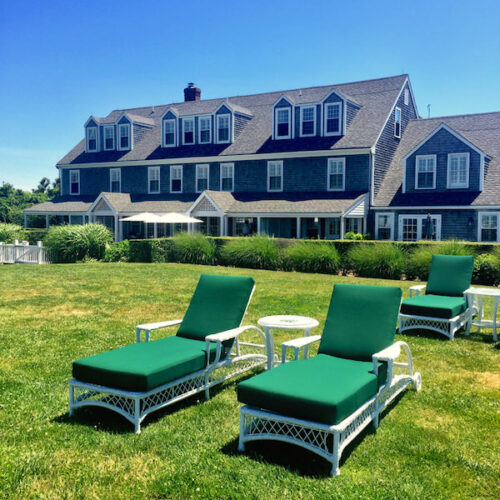
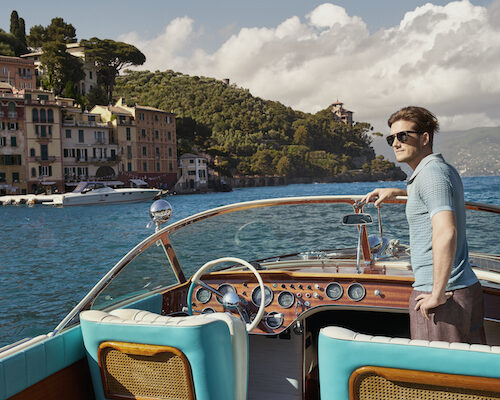

I love wine tastings but have always found it a big waste not to actually drink the wine. I’m more of a red wine person I like them rich and full bodied. Love the image of the guys drinking straight from the bottle, too funny!
AO – I’m definitely a big red wine person myself – my favorites are cote du rhone and burgundies. We’ll be covering it all!
Thank you for sharing. I am learning a lot from the wine posts!I have been to several wine tastings and enjoyed them very much.
I enjoy wine and champagne and intend on learning more about both this year.
Have a great day.
Teresa
xoxo
Hi Teresa – That’s what we’re here for!! I’m hoping to attend a few more myself this year.
So enjoy your Wednesday Wines and learning about new ones… I’m a huge Bordeaux fan so these have been noted for the next time I’m at the wine shop. Quick question – does Terry suggest airing an old Bordeaux (circa 1970 – 1995) in the bottle or by decanting it? Would love to know!
xxoo
Hi Buzz – great question!! I’ll make sure Terry chimes in with an answer!! So check back soon.
I’m dying to read your post and have to run to work. Saving this one for as soon as I come home. Love all the images and look forward to reading what you wrote. I used to be a full bodied, buttery Cal Chard girl and Rombauer is about as buttery as you can get. Now I’m leaning more to the middle like a Pahlmeyer, Kistler, Paul Hobbs, Hartford, etc. I love all Russian River Chards but I can’t wait to read about the French – usually too earthly and minerally for me..but I have found some I really enjoy in the summer. Can’t wait to read plus amazing images. ann
Hi Ann – See you later. I’m more of a red girl myself but definitely enjoy a good white as well – the Graves are in the Sauvignon blanc camp but we’ll be discussing white burgundy soon as well.
Great tips! I’ve been to a few wine tastings in California and really enjoyed them. Great way to learn more about your tastes. I’ll have to remember these Bordeaux…they sound great!
xo Kelly
Hi Kelly – yes it’s a great way to learn not only about the wines themselves but what you like, so when you are choosing a wine either in a store or a restaurant you can be an educated consumer!
brilliant post! thanks for much for the tips!
xo Alison
and flowers – thank you! Always trying to learn more and find new choices!!
We went wine tasting few times in France and in Italy and it was so amazing and fun! I truly have to show this post to Balazs..He will love it as much as I do:) Thanks,sweetie and wish you a lovely day
Kisses
ps: I am hosting a sweet necklace GIVEAWAY today :) … Please, join in!
Hi Diana – Wine tastings are indeed fun and a great learning experience! Hoping to do more this year!!
We are considering a trip to Napa in October so I’m going to forward this one onto my husband just in case. Once because he’ll enjoy learning the info but mostly because he will remember it all much better than I!
Hi Jeanette – Sounds like fun!! I know Terry runs trips as well – perhaps we should do a post planning a Napa trip – what a great idea!!
Loving the chocolate and butterscotch pudding – beautiful presentation and I can already taste it!! Would love to do some blogs on places to visit in Napa and how to arrange and what route to take and where you should eat
Hi Q,
learning a lot more from you than what I’ve learned from being in the business several years back… thanks for all the info…
I think I’m feeling like wine tasting this weekend too…
will try some of those wines you recommend…
have a great Wednesday…
maureen
Hi Maureen – Too funny but glad to be of service of course!! Cheers!
Maureen – what did you do in the wine business?
Though champagne is my fav go-to drink, we tend to enjoy a lot of wine at our house, as my husband is a big oenophile and collector. I just trust him to pick out a great wine and I’ve learned to trust my nose and tastebuds. Over the years, I like chardonnay less and bordeaux more. It’s always fun to do a tasting with friends….everyone has a different take.
PPT – Champagne is my preferred poison as well but I like to know a bit about it all – also helpful in restaurants. I’m more of a red girl also – although I tend to prefer burgundies to bordeaux, although if it’s a good wine, I’m happy!!
That is the best way to enjoy wine – drink whatever you find that YOU like not what all the reviewers have to say. Trust your palate!!
So informative!
I used to live in the Okanagan, here in Canada and you’d find really good wineries there. Going to a winery for a wine tasting used to be our favorite thing to do.
Have you been to the Okanagan (Kelowna, BC), Q? If you haven’t you reallu should look into it. It’s gorgeous!
xo
Luciane at HomeBunch.com
Hi Luciane – I’ve never been to that part of BC. I’m sure there are some great wines there as well. I did travel by train across Canada right after college – it was a spectacularly beautiful trip.
Thank you Terry and Q! Such a great little post on this area. I’ve always shied away from French wines because my first boyfriend was an Italian wine taster and I only know those wines + drink chard, being a Californian. I think now is the time to venture into some of these great suggestions of yours!
xo Mary Jo
Hi Mary Jo – Thank you! Oh you must try French! We will be covering other regions of France as well as other countries – and of course California.
Happy after snow day!! I am very careful with decanting. It is almost bottle by bottle; based on the storage of the wine over the course of it’s lifetime.
A general rule is any First Growth bordeaux ie: Mouton, Haut Brion, Margaux, Latour, Lafite, Petrus – if these have been stored impeccably they will need airing time for sure event the 1970; so decanting is a must. And definately from 1985 – 1995 decanting is excellent for the above wines. For the Cru Classe wines which are generally in the $25 – $50 range older wines can’t take the airing. The vines are usually younger and the soil is not as strong in minerals as the higher class Bordeaux. You can always email me at hneckwine@aol.com for any question on any bottle and we can discuss. Love helping people get the best enjoyment out of their wines